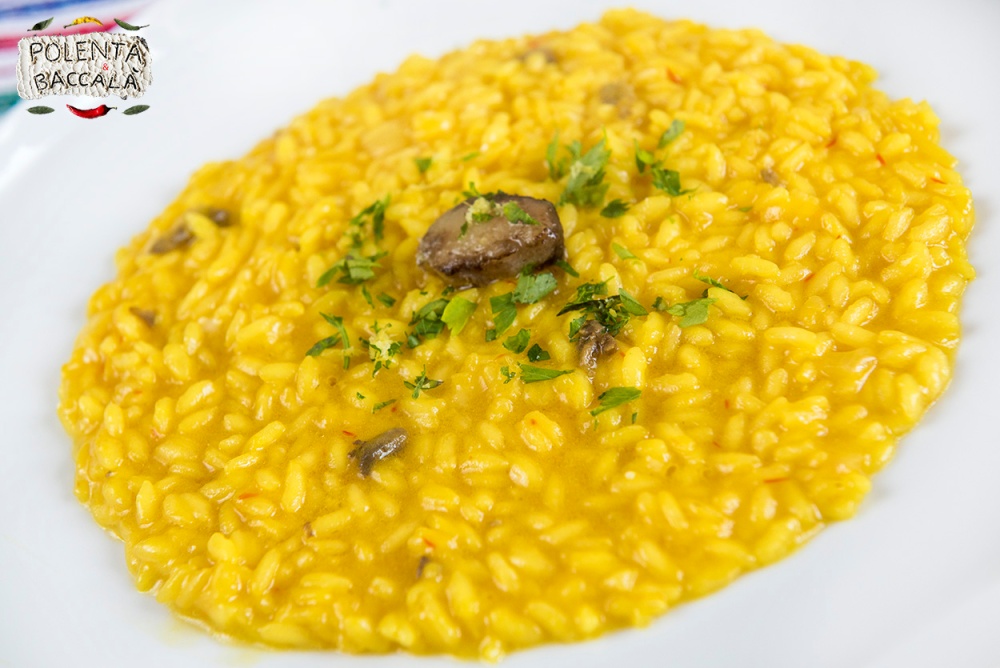
This recipe is one of the most famous culinary symbols of the city of Milan.
It’s another old recipe with a long history: the first verified recipes date back to the beginning of the XIX century (there are legends about its history that allegedly date back even to the XVI century, but in all the cookbooks from the XIV century until the XVIII century there was only one technique to cook the rice: boiled in water, so these legends cannot be true 🙂 ).
The first written document in which the rice was being sautéed in a pan and not boiled it’s a recipe of the chef Antonio Nebbia written in 1779. Then it’s in the 1809 the first recipe where it’s mentioned a “Riso giallo in padella” (yellow rice in the pan), and it was made with a soffritto of butter and onion, rice, broth, marrow, saffron and the cervellato (the cervellato was an old ingredient no more used: it was a mixture of pancetta, beef bone marrow, pig brain, sometimes beef fat, cinnamon, nutmeg, cloves, Parmigiano Reggiano, clove oil and salt, and this mixture was preserved in a bowel previously tinted in saffron water). Then from the end of ‘800/beginning of ‘900 the cervellato slowly went forgotten and left the place to the “gras de rost“, a dialect word that means “fat of the roast”: it’s still used also nowadays by someone but it’s considered discretionary (if you have some then use it, it will add even more taste, but if you use a good and tasty meat broth I think it’s not needed).
But the first “paternity” of the recipe arrived in the 1829 when the famous chef of Milan Felice Luraschi in his cookbook wrote a recipe called “Risotto alla Milanese giallo”, so the connection with the city became clear and official. And finally the recipe with the nowadays used ingredients was written in the beginning of ‘900 by Pellegrino Artusi in his famous cookbook “La scienza in cucina e l’arte di mangiar bene“.
Traditionally this risotto is being served next to the other very famous recipe of Milan, the Ossobuco alla Milanese. But nowadays the two recipes are often served separately.
Which type of rice? Most of the chefs in that area agree that the best choice is the Carnaroli type. But also the Vialone Nano type gives good results (there is to take care a bit more while cooking that because it gets overcooked more easily). As third choice, if you don’t find these two types, also the Arborio type can be ok, but its texture it’s not my favorite.
At a first look from outside it might seem an easy/simple dish, but to make it really well it requires time and care: you need a good meat broth and that takes time to be made (of course, you can store it in the freezer and use it when you need), you have to remove the marrow from the bone, the saffron needs to be left in infusion at least a couple of hours in advance to emanate perfectly all its aroma and color, and the rice needs continuous attention from the beginning until the end.
Let’s see the recipe now.
INGREDIENTS (4 people):
- 320 g of rice (read above), I used Carnaroli type
- half onion (or a small one), about 40-50 g
- 60 g butter (20 + 40)
- 50-60 g of beef/ox bone marrow
- 1,5 liters of beef broth (but also a good hen/rooster/chicken broth is perfect)
- 0,25 g saffron (2 bags)
- 1 glass of dry white wine
- 40-50 g of freshly grated Parmigiano Reggiano (or Grana Padano)
- The first things to do are to prepare a good meat broth (or to take it out in advance from the fridge/freezer) and to leave the saffron in infusion in warm water or in some warm meat broth at least 1-2 hours in advance, in this way it will emanate perfectly all its aroma and color. Then remove carefully the marrow from the bones (take care, some small pieces of bone could remove too).
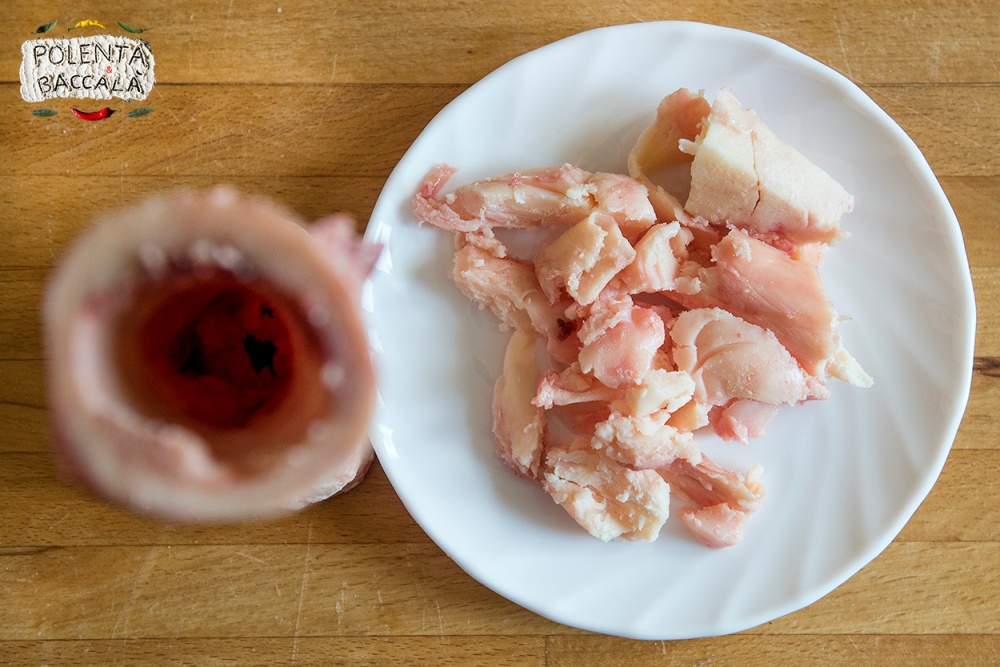
- Cut the onion very small (in a good risotto the pieces of onion shouldn’t be larger than a grain of rice) and put it to cook in a small pan with 25 g of butter and half of the bone marrow, cook gently at low heat for 10-15 minutes. We do it in a different pan because at the toasting temperatures of the rice we would easily burn the butter and the onion. And it’s very unpleasant to find burnt pieces of onion in the risotto.
- Now take a pot in which you will make the risotto, heat it up at high heat and when it’s hot add the rice, with no fats. We have to toast it for 2-3 minutes, keep it moved with a wooden spoon (or simply make it “jump” by moving the pot) every 20/30 seconds and when you cannot touch the rice with your hands and you see that the grains have become a bit shiny/transparent then it’s toasted. This is the moment to add the white wine, keep the heat higher until the wine has reduced. Start counting the time from now, in 15-18 minutes a Carnaroli rice will be ready, read the package too (why is it important to toast the rice? Because this operation preserves the compactness of the grain while cooking: skipping this step could make the risotto resemble to a boiled rice simply added to a seasoning/sauce, but risotto it’s not boiled rice, it’s another thing).
- When the wine has reduced (few seconds, and be sure that the alcohol has completely disappeared otherwise it could leave some unpleasant bitter notes) add 3-4 ladles of hot meat broth (about 500-600 ml), it has to cover well all the rice, and add also the onion with the butter and the marrow which you have previously cooked. Keep the heat on medium/strong, the liquid has to boil well all the time. Keep moving regularly (but not continuously) and gently the rice, with a wooden spoon or a spatula, it must not attach on the bottom. And keep adding the hot broth when needed, 1 ladle at each time, the rice has always to stay covered with broth (during the whole process I used almost 1,5 liters of broth).
- After 8-10 minutes of cooking add the remaining marrow (break it in smaller pieces), and just 2-3 minutes before the rice is ready add the saffron with its liquid. Mix.
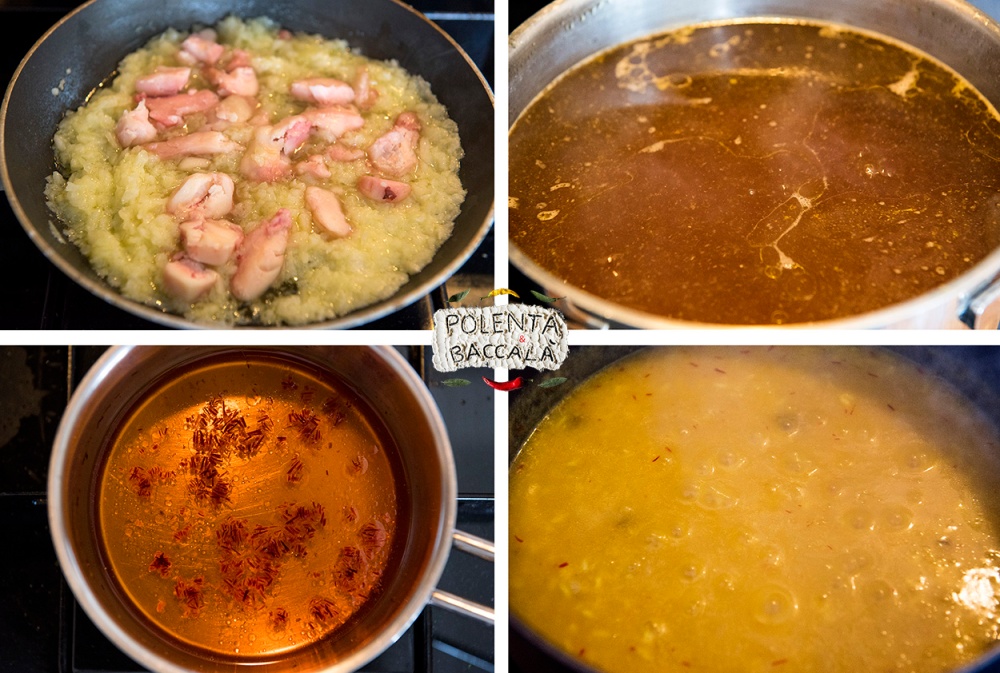
- Try the rice and when it’s ready switch off the heat, now we have to “mantecare” our risotto: add the remaining butter, and the grated Parmigiano Reggiano, let it rest covered for 1-2 minutes and then mix well (don’t exaggerate with the Parmigiano because there is the risk to flatten the whole flavor of the dish, 40-50 g are more than enough). Wait other 2-3 minutes, covered, and then serve it. Extra salt shouldn’t be needed: the broth is already salted, and the Parmigiano too.
- During this few minutes I cooked in a pan on both sides some slices of bone marrow, I used it as decoration for the dish, placed in the middle.
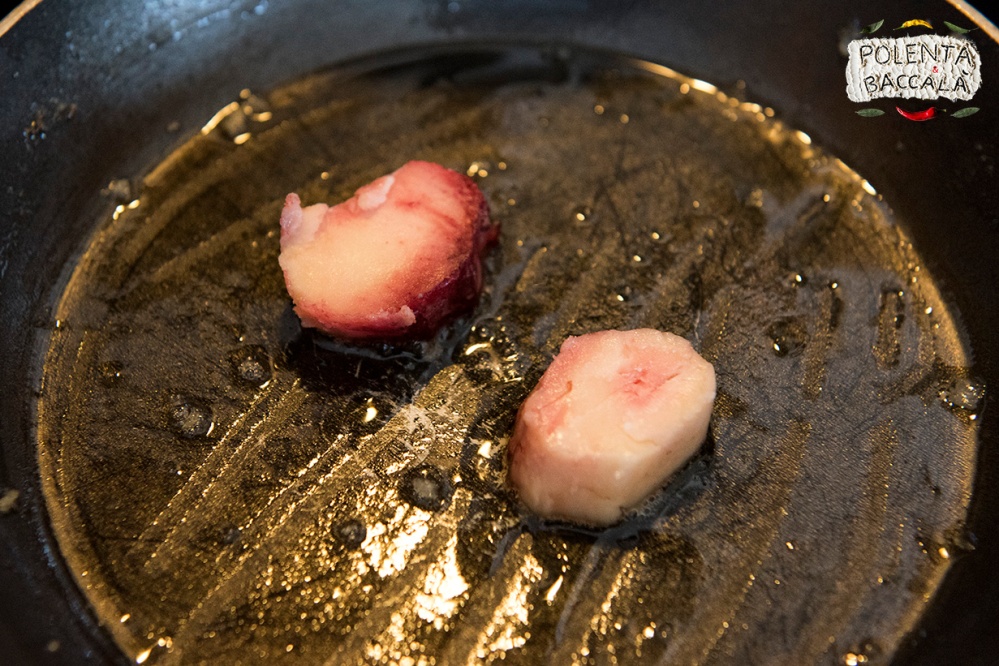
- Serve it and enjoy! I also chose to sprinkle just a very little mixture of fresh parsley and lemon zest (not treated), to remind the gremolada which is used in the Ossobuco alla Milanese, the “twin recipe” of this great risotto (but I didn’t use any garlic in this case, that would be too much), this is an extra addition which is not part of the traditional recipe but it fits quite well in my opinion, it adds some freshness, and it still has a connection with the tradition of Milan 🙂 a good risotto has to be creamy and not too thick, with the grains of rice perfectly “hugged” by the sauce, and the grains of rice have to be cooked at the right point, take care because an overcooked risotto with too soft/melting grains it’s not that good at all, and it’s not a risotto.
PS: the best pairing is with a glass of red wine, with a good structure, spicy and rich of tannin, in contrast with the fats of this dish. Also a Bonarda from Oltrepò Pavese area can fit well. If you prefer white, a Riesling with its acidity it’s a valid choice.

———————————————————————
Products used in this recipe:
Rice: Carnaroli type from “Gli Aironi”
Bone marrow: Angus beef from “Terra Pannonia” farms
Meat broth: made with a free range hen of Misi Bacsi 🙂 a local farmer
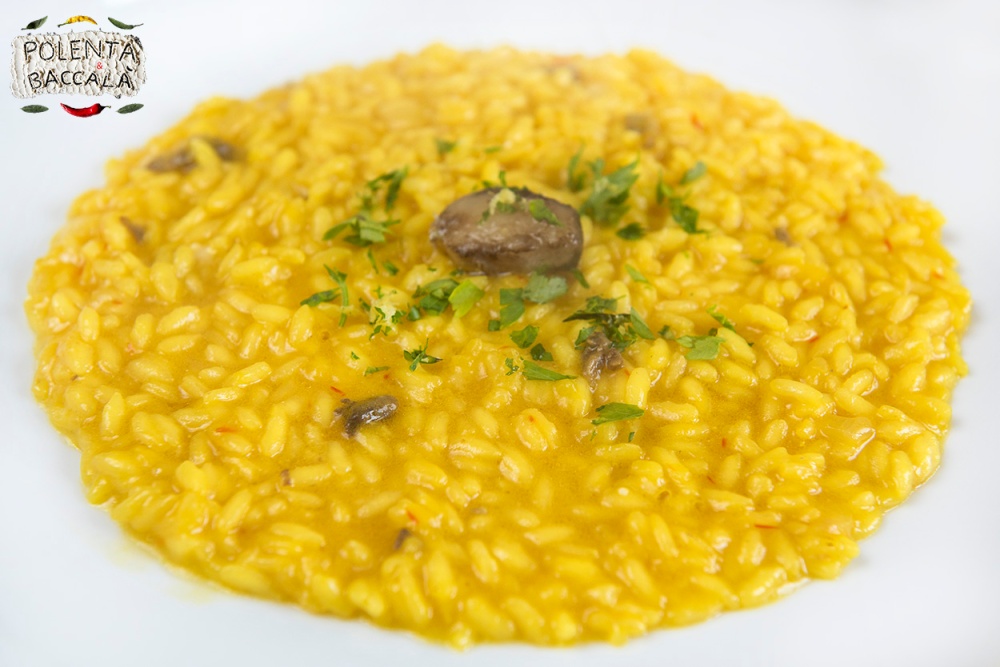
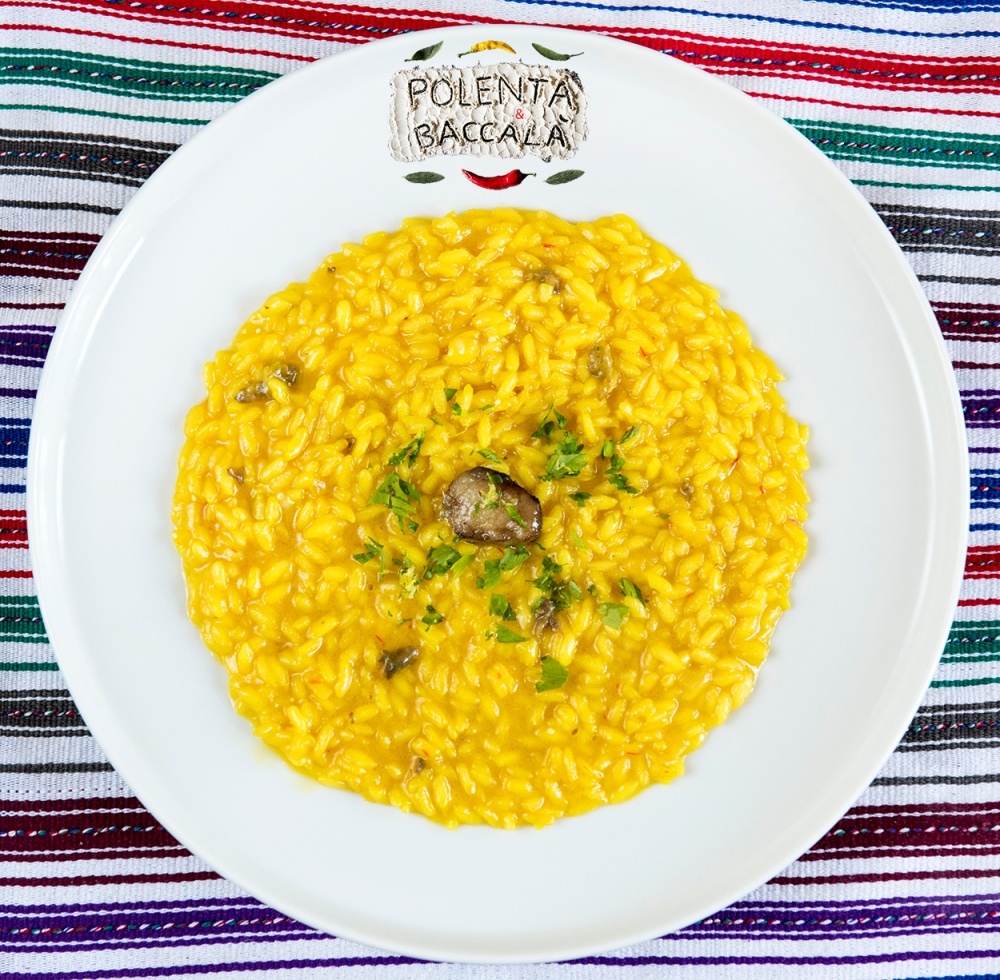
Loved the story and your dish looks amazing! I’m a big fan of risotto, so I will definitely try this recipe. Thanks for sharing!
LikeLiked by 1 person
Thank you! 🙂
LikeLiked by 1 person
Interesting history to this one. What a fantastic colour. Absolutely love risotto and this recipe looks like something I might have to cook.
LikeLiked by 1 person
Thank you 🙂 let me know in that case 🙂
LikeLike